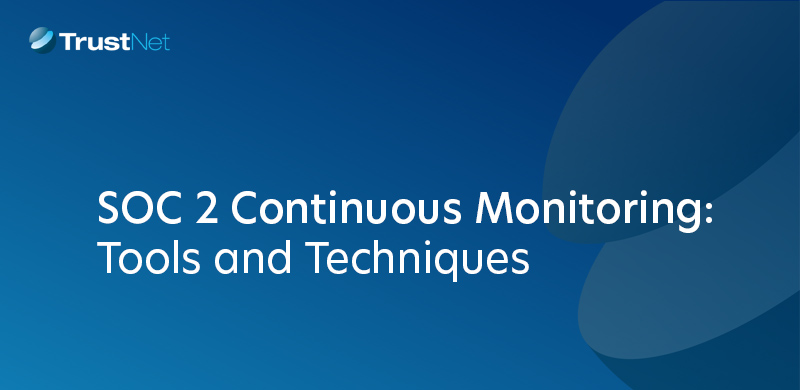Measuring the ROI of Cybersecurity Awareness Training: Small, Medium and Large Businesses

Cybersecurity awareness training is essential for businesses of all sizes. With human error contributing to 68% of data breaches, organizations must address this critical vulnerability. Regardless of size, every business faces unique risks, but they all share a common priority: ensuring employees are well-prepared to identify and respond to cyber threats.
Investing in training transforms employees from potential weak links into valuable defenders. Whether it’s a small business striving to reduce costs while enhancing security, a medium enterprise scaling its defenses as it grows, or a large corporation navigating complex global threats, cybersecurity awareness is vital. It not only reduces incidents like phishing and social engineering but also builds a culture of integration where security becomes part of daily operations.
However, a key challenge persists, how can businesses measure security training effectiveness and demonstrate the cybersecurity awareness ROI? Quantifying outcomes like reduced risks, operational improvements, and financial gains can be daunting but is critical for justifying continued investment.
This article explores actionable solutions tailored to small, medium, and large businesses, highlighting key metrics such as:
-
- Training participation and completion rates
- Incident reductions post-training
- Employee responsiveness and feedback
We’ll also address the distinct challenges each business size faces when measuring ROI and provide strategies to overcome them. By understanding and using the right metrics, businesses can assess their training impact, justify investments, and build a more secure future.
Understanding ROI in Cybersecurity Training
To determine the value of cybersecurity awareness training, the ROI must be calculated. It not only supports the rationale for resource allocation but also shows how these kinds of efforts strengthen the security posture. The formula for calculating ROI is as follows:
ROI (%) = ((ALE – mALE) – Cost of Solution) ÷ Cost of Solution
Where:
-
- ALE (Annual Loss Expectancy): The estimated loss your organization might face in a year without training.
- mALE (Modified Annual Loss Expectancy): The reduced loss expected after implementing training.
For instance, if your business spends $50,000 on training and reduces an anticipated $200,000 in losses by 90%, your ROI would be extraordinarily high. Using the formula, you’d quantify the financial benefits of minimized risks, showing management a clear cost-benefit analysis.
Cybersecurity awareness training benefits extend beyond financial metrics. Here’s why investing in it is a smart decision for any organization:
-
- Risk Mitigation: By training employees to spot phishing scams or suspicious behaviors, businesses can drastically cut the risk of data breaches.
- Operational Efficiency: Educated staff need less time to recover from incidents or report possible threats, creating smoother processes.
- Strategic Justification: Demonstrating ROI builds trust within leadership teams, making it easier to secure future funding for cybersecurity initiatives.
Analyzing costs and benefits is particularly helpful when adjusting training to meet corporate requirements. Since resources are directed to departments that will have the most impact, cost-effectiveness is ensured by having a thorough awareness of your company’s most susceptible areas. ROI assessment also promotes accountability by guaranteeing that programs are continuously improved for optimal efficacy.
Whether you’re a small business or a global corporation, accurately calculating ROI enables you to balance costs with substantial long-term returns.
For more info on our Security Awareness Training Platform, Click Here
Key Metrics for Small Businesses
Small businesses may nevertheless properly assess their cybersecurity efforts despite limited resources and restricted budgets. By monitoring key performance indicators (KPIs), businesses may evaluate the success of training programs and maintain security without going over budget.
Focus on these essential metrics:
-
- Participation Rates. Track how many employees sign up for training programs. A high participation rate indicates your team sees the value in learning how to handle cyber risks.
- Completion Rates. Monitor how many participants finish their training. It’s a clear measure of engagement and commitment to the program.
- Pre- and Post-Training Assessments. Use quizzes or tests before and after training to measure employee improvement. This comparison reveals how well the program strengthens knowledge or skills over time.
- Phishing Simulation Results. Run simulated phishing emails to gauge your team’s ability to recognize and handle threats. The results demonstrate how effectively the training has prepared them for real-world scenarios.
- Incident Report Frequency. Pay attention to the number of suspicious activities reported by employees after training. An increase in reports is a positive sign — it shows heightened awareness and proactive behavior.
Why these metrics matter:
-
- They are cost-effective, relying on straightforward tools or software most businesses already have.
- They provide measurable insights into the strengths and weaknesses of your security awareness program.
- They help you adjust strategies for better results without introducing significant costs.
By putting effort into these KPIs, you’re creating a more resilient and vigilant staff that is prepared to take on cyber threats. Even companies with minimal resources may create a culture that emphasizes cybersecurity and safeguards the future with regular monitoring.
Metrics for Medium-Sized Businesses
As they expand, medium-sized enterprises frequently encounter specific challenges. Their cybersecurity requirements get more complicated as their teams grow and their dependence on technology increases. While they may still use many of the measures that small businesses use, adding sophisticated data analysis offers better protection and deeper insights.
Here are key metrics mid-size companies should focus on tracking:
-
- Employee Feedback and Engagement Scores. Gather feedback from employees on cybersecurity training programs. High engagement scores indicate that the content is resonating and employees are motivated to apply their new knowledge. Feedback also provides opportunities to fine-tune future sessions.
- Time to Detect and Respond to Security Incidents. Measure how quickly your team identifies and reacts to potential threats. This metric reflects the effectiveness of training and tools in minimizing damage from attacks. A shorter response time demonstrates stronger preparedness and quicker recovery.
- Compliance Adherence Rates. For many medium enterprises, meeting industry or regulatory cybersecurity standards is critical. Track how well your business adheres to these requirements after training. High compliance rates reduce risks of penalties and strengthen overall customer trust.
- Security Tool Utilization Rates. Evaluate how effectively employees are using implemented security software. Metrics like login frequency, adherence to tool-specific protocols, or proper escalation usage can highlight whether the tools are being leveraged to their full potential.
Why these metrics matter for medium enterprises:
-
- They can handle expanding teams and more intricate systems thanks to their scalability.
- They offer a thorough view of your cybersecurity return on investment, demonstrating the worth of your product and training expenditures.
- They allow for ongoing improvements by pointing up weaknesses in both strategy and implementation.
By routinely assessing these KPIs, the business can better connect risk management initiatives with long-term objectives and maintain its resilience to changing threats.
Large Enterprise Metrics
For large businesses, cybersecurity demands a more comprehensive approach. The complexity of their operations and the potential scale of threats require precision, strategy, and advanced tools to evaluate and improve their security posture. Incorporating detailed and sophisticated metrics can clearly understand the effectiveness of their security initiatives.
Consider these essential metrics to guide enterprise-level security programs:
-
- Security Maturity Model Progression. Assess the organization’s evolution across security maturity stages. Progression in these models reflects systemic improvements and the integration of best practices within the organization.
- Reduction in Successful Attacks Over Time. Measure the decrease in successful breaches or attacks over a set period. This metric shows how well the organization’s defenses have strengthened through training, tools, and policy enforcement.
- Financial Impact Avoidance. Quantify the avoided costs of potential cyberattacks. Metrics like reduced downtime, minimized data recovery expenses, and avoided ransom payments help calculate the financial value of your security investments.
- Integration of Security Awareness with Business Objectives. Link cybersecurity efforts directly to broader business goals. Metrics in this area examine how security awareness programs contribute to operational efficiency, customer trust, or market positioning.
When it comes to analytics, large businesses have a significant edge. They may tie the efficacy of training to more general goals by utilizing sophisticated tools and AI-driven insights. AI algorithms, for instance, are able to identify trends in employee reporting or security tool usage and correlate these with a reduction in risks or a disruption in operations.
Why these metrics are important:
-
- They coordinate efforts to safeguard financial objectives and show the return on investment for extensive security initiatives.
- They offer a broad perspective on the organization’s initiatives to reduce risk and increase resilience.
- They help businesses keep ahead of the constantly changing landscape of cyber threats.
By leveraging these metrics and the power of advanced analytics, enterprises can create a security strategy that safeguards assets and supports broader business success.
Best Practices for Continuous Improvement
Follow these best practices to make meaningful, measurable improvements to your security training program:
Regularly Update Training Content
-
- Ensure training modules address the latest threats and techniques used by cybercriminals.
- Frequent updates keep your team better prepared to identify and mitigate risks.
Tailor Metrics to Fit Your Business
-
- Choose metrics that reflect your company’s size, goals, and unique risks.
- Focus on tangible outcomes, such as reduced phishing incidents or improved detection times.
Gather and Apply Employee Feedback
-
- Survey employees about program clarity and relevance.
- Use this input to refine future sessions and address gaps in understanding.
Benchmark Against Industry Standards
-
- Compare your performance with industry benchmarks to identify strengths and weaknesses.
- Draw inspiration from peers to integrate proven strategies into your programs.
Adopt Adaptive Security Strategies
-
- Scale training initiatives to match your organization’s growth and operational changes.
- Ensure strategies evolve to accommodate trends like hybrid work environments or advanced threats.
Each of these practices supports the dual goal of protecting your assets and increasing the effectiveness of your security awareness investment.
Partner with TrustNet for Tailored Security Awareness Training Programs
TrustNet specializes in optimizing security awareness programs and improving cybersecurity training ROI to help businesses achieve measurable success. With expertise in tailoring solutions to meet your organization’s specific needs, TrustNet ensures your team stays prepared against evolving threats. By leveraging modern strategies and tools, we help you strengthen your security posture while maximizing the value of your investment.
Safeguard your assets and build a resilient security framework that protects your future. Schedule a consultation with our experts today.
Subscribe to the TrustNet Newsletter
actionable cybersecurity strategies, and TrustNet’s cutting-edge solutions.




